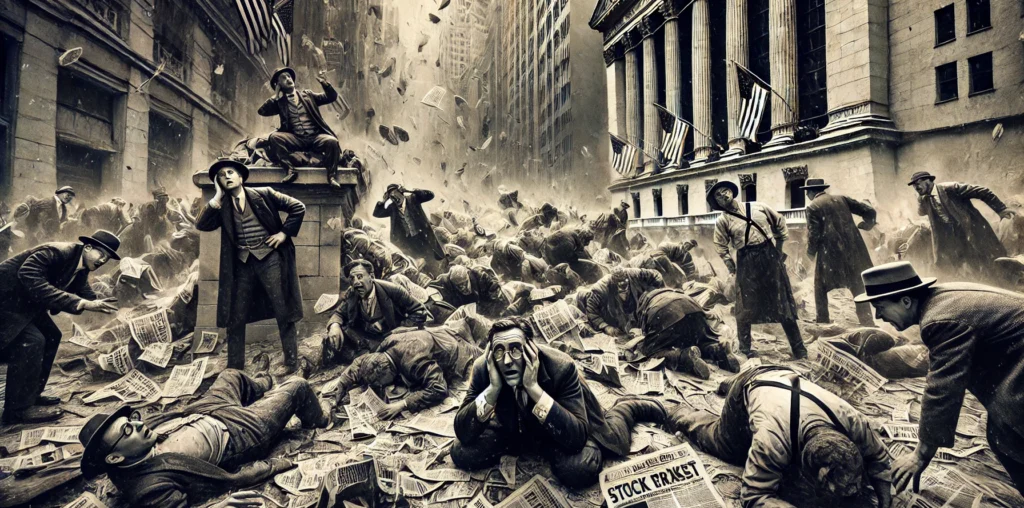Background: During the “Roaring Twenties,” the U.S. economy saw rapid growth, and speculation in the stock market became widespread. Many Americans invested heavily in stocks, often using loans, which contributed to inflated stock prices.
What Happened: Black Tuesday, October 29, 1929, marked the most devastating stock market crash in the history of the United States. The collapse began after a period of rampant speculation in the stock market during the 1920s, often called the “Roaring Twenties.” This was a decade of unprecedented economic growth, and many Americans became increasingly convinced that investing in the stock market was a path to easy wealth. Fueled by optimism, large numbers of people—including many who had never invested before—borrowed money to buy stocks, using a practice known as “buying on margin.” As stock prices continued to rise, a speculative bubble formed, driving prices far beyond the actual value of the underlying companies. By late 1929, concerns were growing that stock prices were unsustainable, and market instability increased. On October 24, 1929, known as “Black Thursday,” panic set in, and investors began selling off stocks in droves. Despite efforts by leading bankers to restore confidence by buying large amounts of stocks, the panic intensified. By October 29, or Black Tuesday, the market collapsed, with the Dow Jones Industrial Average plummeting. Investors lost billions of dollars in a matter of hours. Banks that had heavily invested in the market failed, and millions of ordinary people lost their savings. The ripple effects of the crash soon spread across the economy, causing widespread bank failures, a sharp decline in industrial output, and massive unemployment. The resulting economic downturn spread beyond the U.S., leading to a global economic crisis that would last for over a decade—the Great Depression.
Impact for the Future: The Great Depression had a lasting impact on economic policy. It led to significant reforms in the banking and financial sectors, including the establishment of the Securities and Exchange Commission (SEC) to regulate the stock market. Social welfare programs like Social Security in the U.S. were also implemented to provide a safety net for the vulnerable, transforming the relationship between governments and their citizens.

